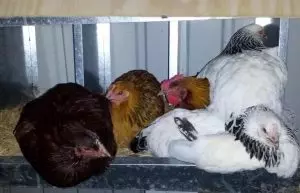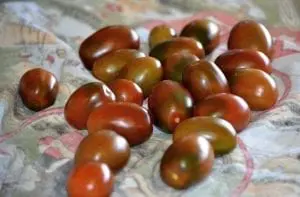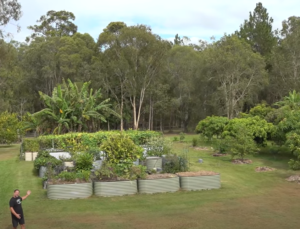One of the best-known edible and medicinal herbs, sage has been grown for centuries in temperate areas of Europe. Part of the plant group known as salvias, common edible sage (salvia officinalis) is just one of over 900 types of sage, many of which are grown as ornamentals.
This perennial herb has a reputation for being tricky to grow outside of its native temperate Mediterranean climate. So how do you grow sage elsewhere?

History
During the middle ages, sage was regarded as one of the most precious herbs, more for for its health-giving properties than its culinary value. So prized was sage, that the highly superstitious medieval people planted rue nearby to protect it from evil. The name salvia comes from the Latin ‘salvare’, to save, and it was believed to give long life to those who used it. An old proverb from the middle ages said: “He that would live for aye, must eat sage in May”.

Characteristics
Sage is a short-lived perennial ornamental herb that grows to about 90 cm (35″) with an upright shrubby habit. It has pebbled grey-green leaves that become more grey as they age, 5–8 cm (2-3″) long with short stalks that grow from woody stems. Sage flowers grow in spikes and have papery calyces, and display colours in varying shades of pink, purple and blue. There are also variegated cultivars with green & yellow leaves and another with burgundy, grey-green and pale-yellow leaves. All parts of the sage plant are fragrant with a strong scented odour and a bitter, astringent taste.

Uses
Common sage is the main type of sage used in cooking. It is known to aid digestion, so is often combined with rich foods. It is used as an ingredient in sausages & stuffings, and paired with meats like goose, pork and eel. Sages flavour goes well with eggs and dairy, so you can add it to omelettes, savoury tarts and quiches. You can chop it finely and mix it through butter or cottage cheese to make flavourful spreads. A few leaves in the cooking water of vegetables such as spinach, peas and tomatoes gives a little extra flavour.
Sage tea is an excellent tonic for sore throats and is super-easy to make. Just steep a sprig of sage in boiled water for 5 minutes. You can improve the flavour of sage tea by adding lemon and honey. If you rub a sage leaf over your teeth it will help to whiten them, a good tip to remember if you’ve forgotten your toothbrush. A handful of sage leaves added to the bath will help to reduce stress and relieve pre-menstrual symptoms, or infuse it in oil to make a topical massage oil that can be used to improve peripheral circulation and reduce fluid retention.

White sage is renowned for being the main component in smudge sticks. A smudge stick is a bundle of dried herbs bound together by twine. Burning these herbs in order to prevent illness, ward off negative energy, or cleanse a space, person or group, is a tradition that goes back thousands of years. To dry your sage, cut small bunches and hang them upside down in a warm, dark, dry place.
Growing Sage
Sage makes for an attractive cottage garden plant, and looks well bordering a garden bed. You can grow sage equally well in containers or pots if you’re short on space.
All salvia varieties prefer a temperate climate, with an ideal temperature range of 15-21C (60-70°F)- this is equivalent to USDA zones 5-8. Sage is drought tolerant and can withstand light frost (down to about -10C/15F) once it is well-established.
Sage is native to the Mediterranean, so it likes a lot of sun & is generally well adapted to harsh, dry and rocky environments. The main thing to remember about sage is that it prefers a fairly dry soil and cannot handle wet feet. If you have trouble with sage, try it in a pot, keep your growing medium coarse & don’t water too frequently- good drainage is paramount. Cactus potting mix is ideal for sage if you can get it, as it is very porous.

Hard frosts will kill sage, as will too much water. If you live in a cold climate, you may be able to grow sage indoors in a well-lit spot. Those in subtropics (like me) can grow sage well through winter but might struggle in summer. In this case, plant your sage in a pot so that you can move it undercover during the wet season.
Sage will grow in very poor soils but improving the soil with compost and manure beforehand will enhance its growth. Ideally, your soil mix should be fairly coarse to allow for good drainage. Mix through some perlite and bulky organic matter if you feel your soil is too heavy. You can add liquid organic fertiliser periodically if you need to.

Once your sage has flowered, (usually in summer) prune back the woody stems once a year. You can use these cuttings to make more sage plants by rooting them in water.
Propagating Sage
Sage is most easily propagated by cuttings. You can grow it from seed, but some salvia varieties can be tricky, so most people opt to use cuttings. Sage is a ‘woody herb’, so make sure your cutting is from a soft new stem, as cuttings from older/woody stems won’t sprout. Sage cuttings are fairly easy to strike, and will grow roots in water, perlite or coarse potting mix.
Although perennial, sage can become ‘woody’ after three or four years. In this case dig up the plant, dig a deeper hole and replant so that only the leafy growth is showing. What you’re doing is essentially burying the woody stems so that they become part of the root system. This encourages new top growth which will be much softer & more lush in the following season.
So now you know how to grow sage, why not give it a try? Just remember, grow it in the right temperature range and keep the soil dry!













